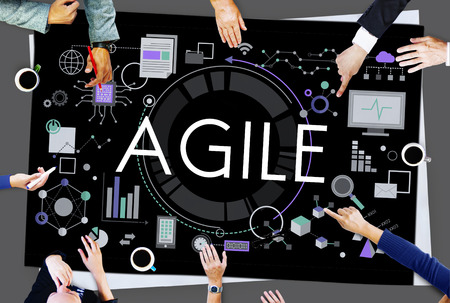If you are interested in Agile, no doubt you have heard of Sprints. But what are they? Well in this article I plan to reveal all and explain more.
What is a Sprint in Agile? Sprint is an iteration of time boxed work that is used within the scrum framework of Agile. Typically, these sprints are short, modularised pieces of development/testing which aims to meet the sprint goal.
To truly understand how Sprints fit into the whole Agile methodology, you need to read on. I will explain the different between sprints and scums, how sprints fit into the Agile Scrum framework and more detail about sprints in Agile.
What is the difference between a scrum and a sprint?
In some cases people may get these confused, but effectively they're very different. A scrum is a meeting, that is typically done on a daily basis and it's an opportunity for the team members to get together to make sure they're still on track for the sprint.
It is an opportunity to work through any challenges they may have had the day before, and to focus their attention on what needs to be done for that particular day.
It's usually a very short 15 to 30 minutes get together, and then you continue with your rest of your day, and the main focus is on the sprint itself.
The Sprint on the other hand. Is an agreed iteration of work to be delivered in a agreed timeframe.
What an Agile sprint cycle?
A sprint cycle is really just another way to say a Sprint. As discussed earlier, a sprint is a timed boxed piece of work used in the scrum framework.
What is Agile sprint planning?
Sprint planning is effectively planning the up coming sprint. It is a collaborative effort which typically involves a scrum master.
For those of you that are familiar with the framework of scrum. The idea is, the scrum master facilitates the planning of upcoming sprints, and agrees, with the project team, all of the backlog items in the product backlog that are going to be used in each sprint.
What actually goes into a sprint?
As discussed earlier, a sprint it is an agreed selection of backlog items that will be delivered in an agreed time frame. Obviously the very specific tasks that are delivered are subjective to the project that you're working on.
For example, let's say that you are building a new banking application, then maybe you'll have two weeks to work on just the graphical user interface and that will be the focus of the first two weeks.
The day-to-day scrums will make sure that you're on track to deliver that sprint goal.
How long does a sprint usually last?
As you can imagine, there is a bit of subjectivity here because it depends on your individual project, or how your company works, but the average is about two weeks.
It can be shorter, it can be a week or it could even be longer. It's not recommended to have really long sprints because the whole beauty of Agile is to have quick sprints, and then get quick feedback and quick iterations.
To cut a long story short, two weeks is the average, but you could be looking anywhere from one to four weeks, but most people go for two weeks.
Related Questions:
What is a sprint backlog? A sprint backlog is effectively a list of tasks that have been identified to be delivered throughout the entire Agile project.
Each sprint consists of the agreed list of work items, for example, the two week sprint, that are taken from the sprint backlog. Effectively, the sprint backlog could literally be a document which has all of the pieces of work and development that are gonna be done throughout the entire project.
What is a sprint forecast? A sprint forecast is a scrum guide that refers to what will actually be delivered throughout the project itself.
This is largely reliant on the product backlog and the items that are selected for each sprint. It gives you a forecast of where you're going and where you're going to get to with your actual project.
What is a confluence sprint planning template? If you're into the world of Agile, then maybe you've come across confluence before.
Effectively, confluence is a collaboration tool that is used to help teams to collaborate and share their knowledge. The sprint planning template is just a template within this tool which enables Agile teams to work more effectively together, and effectively that's what it is.


